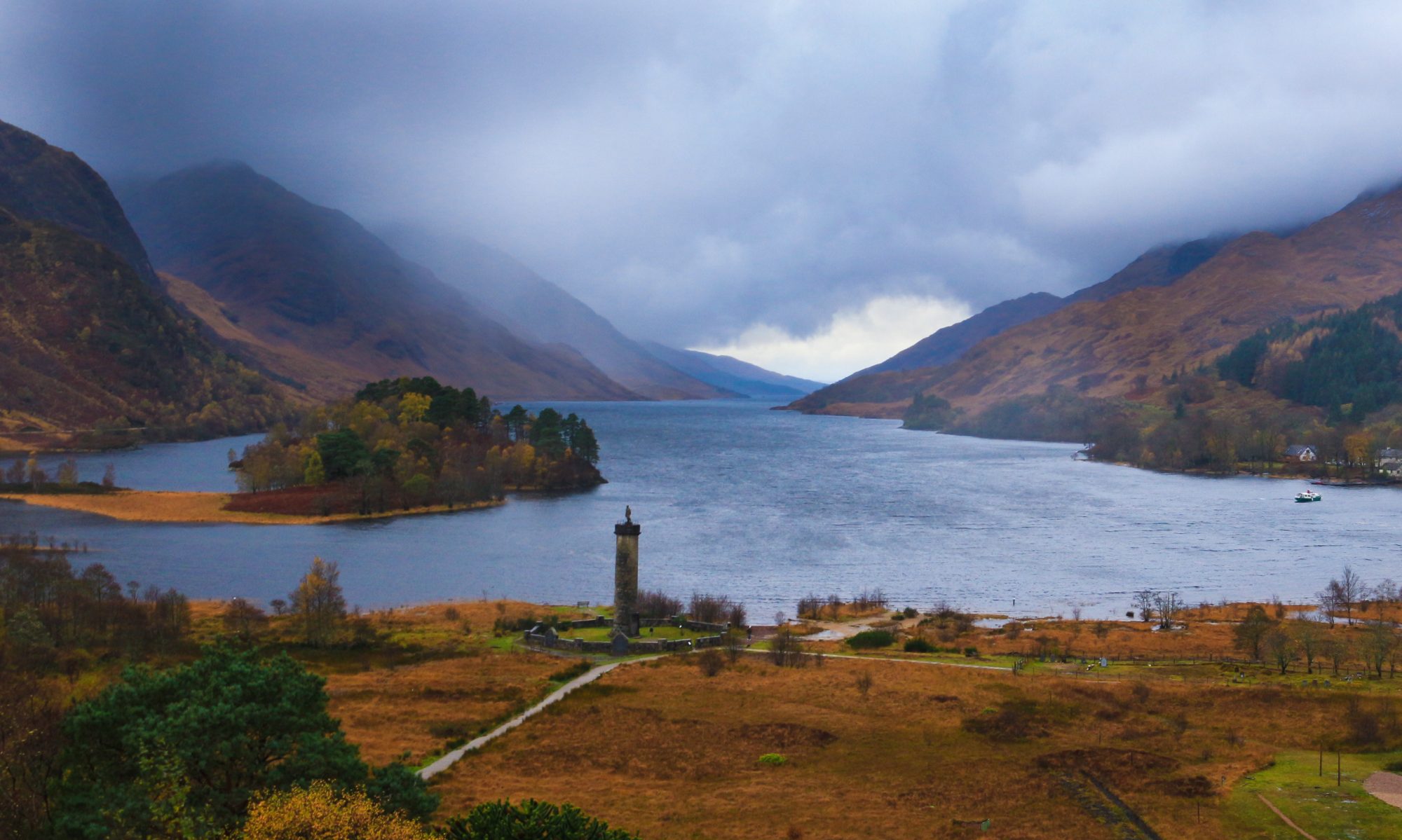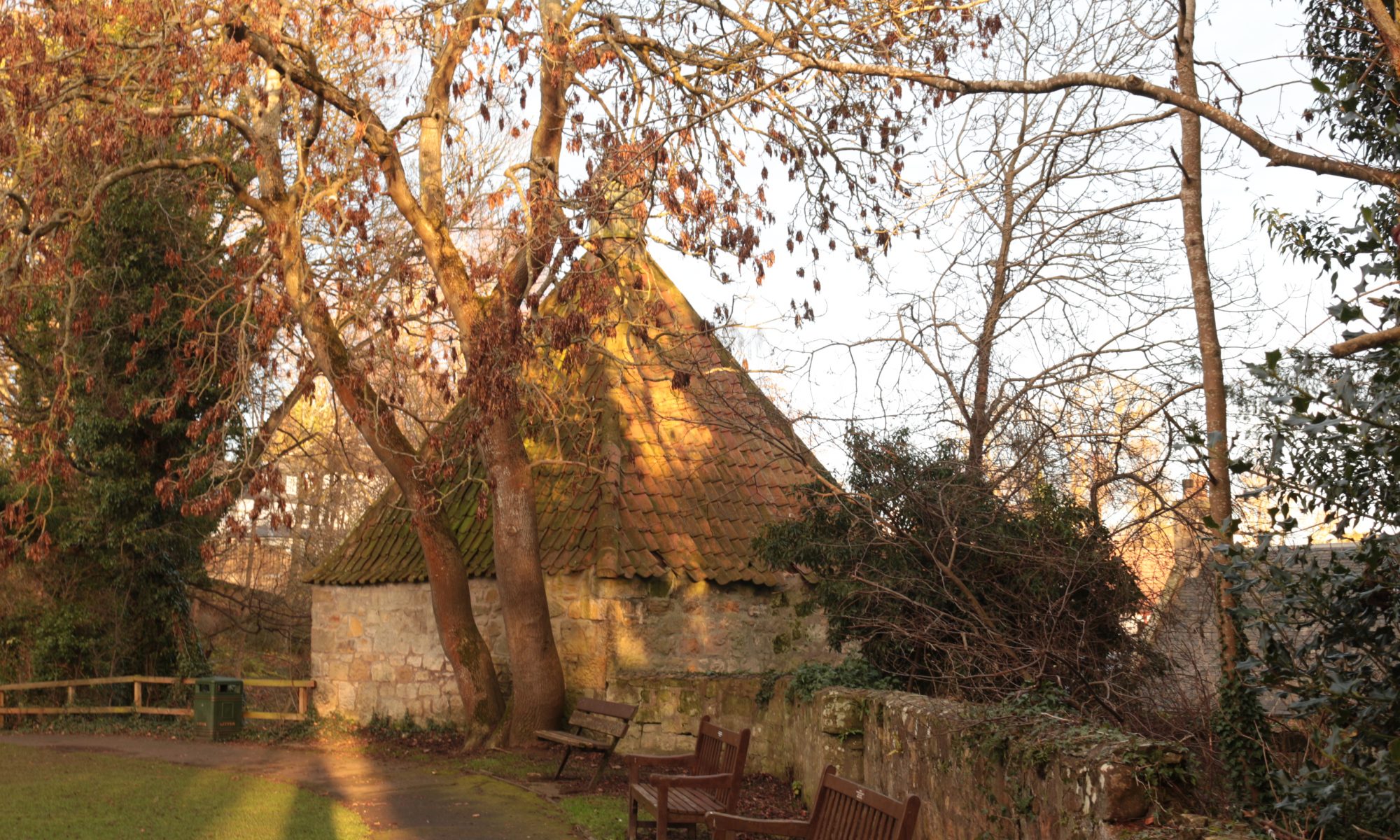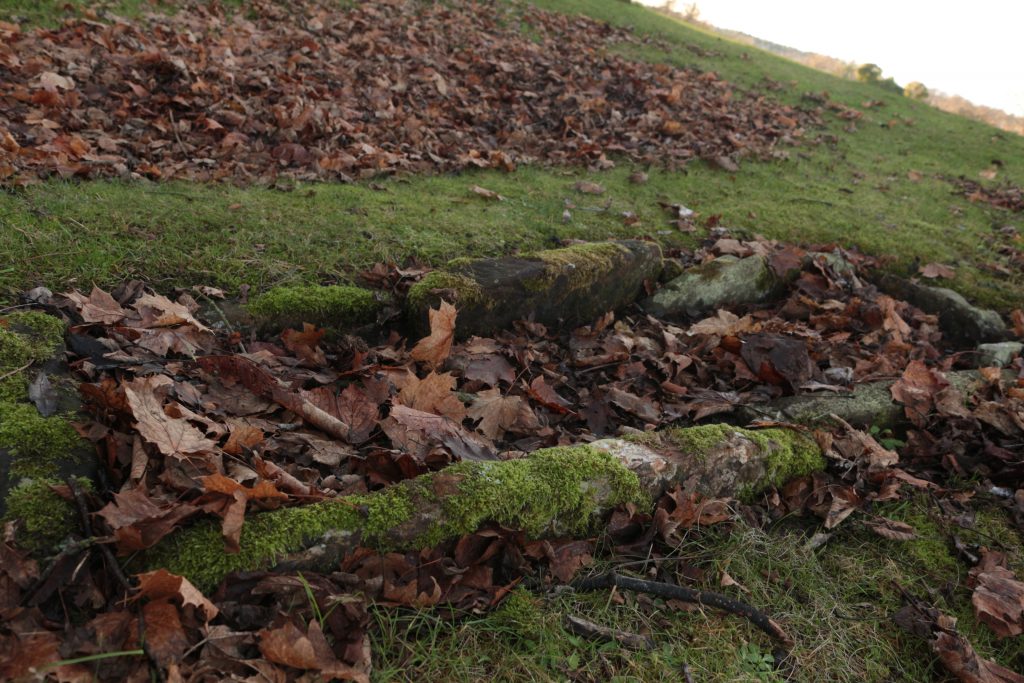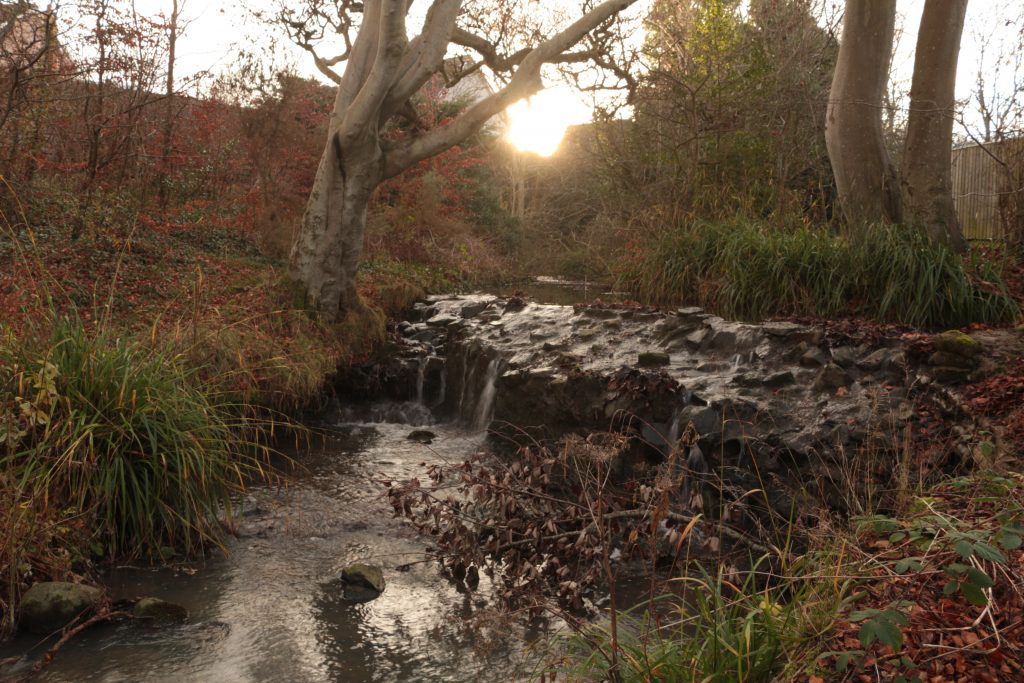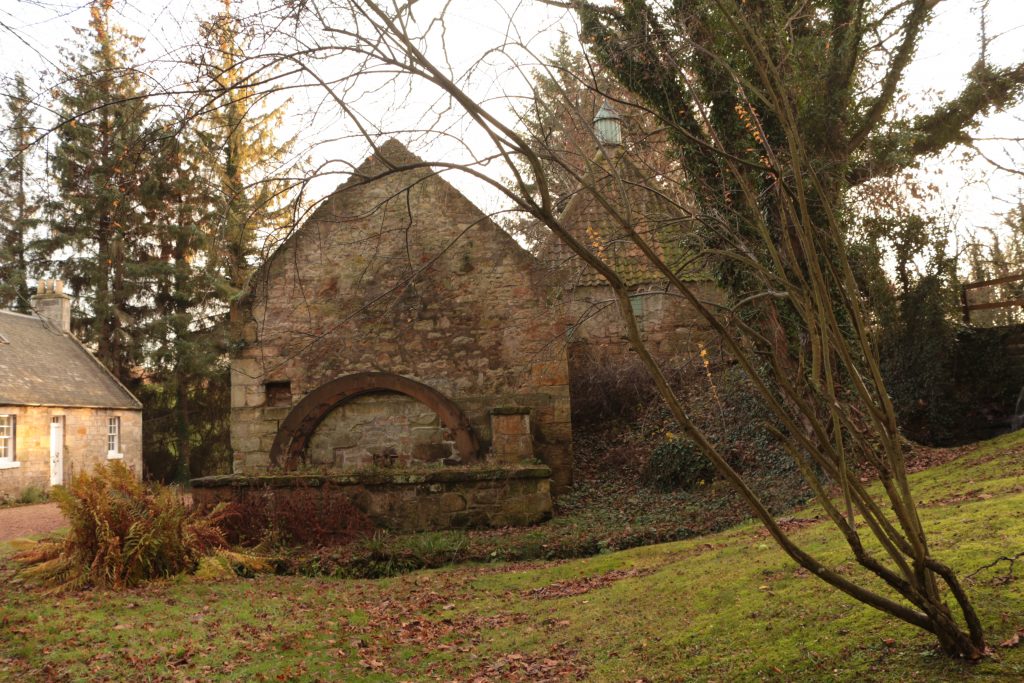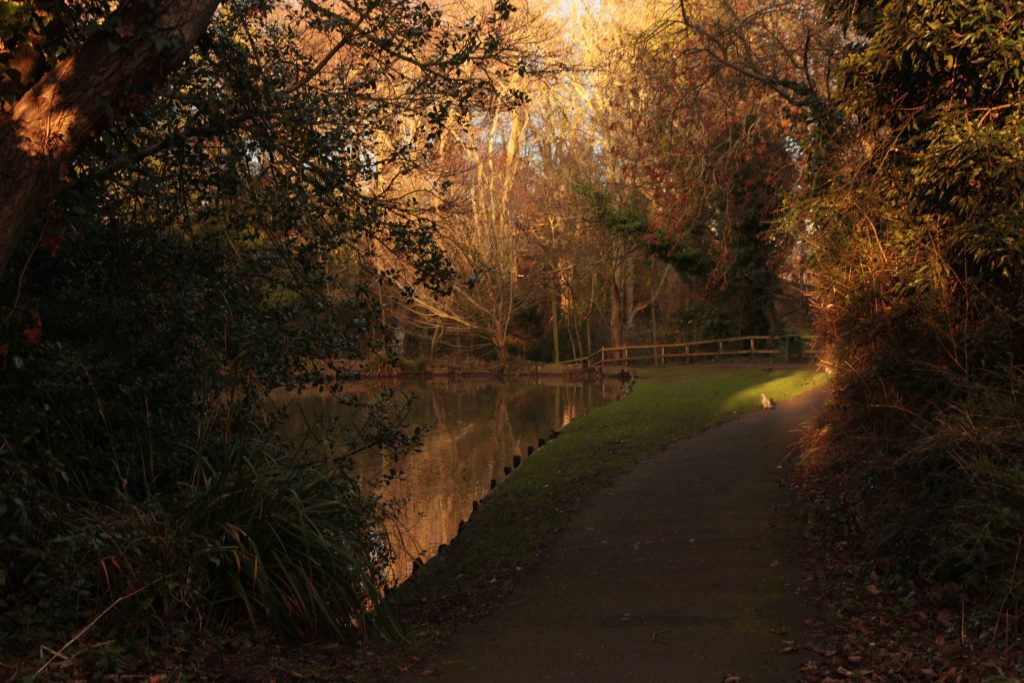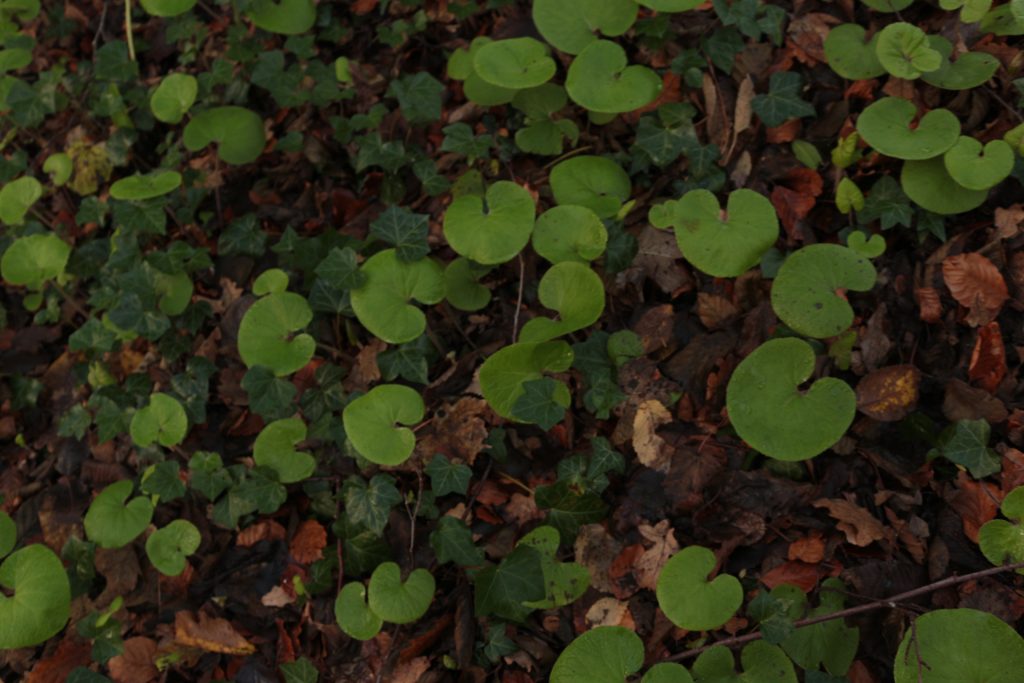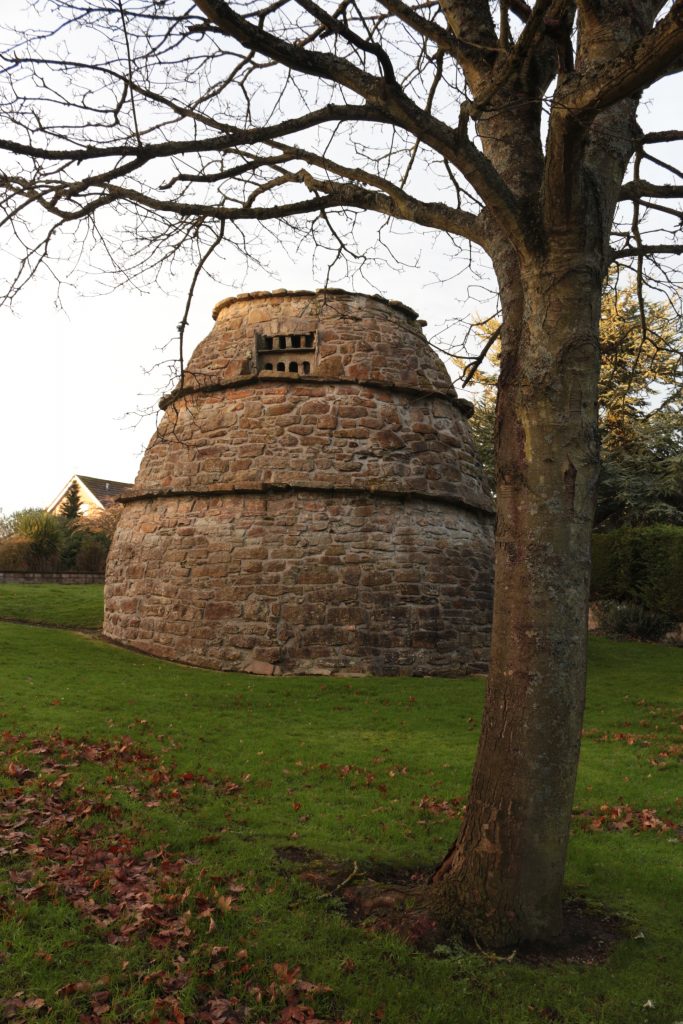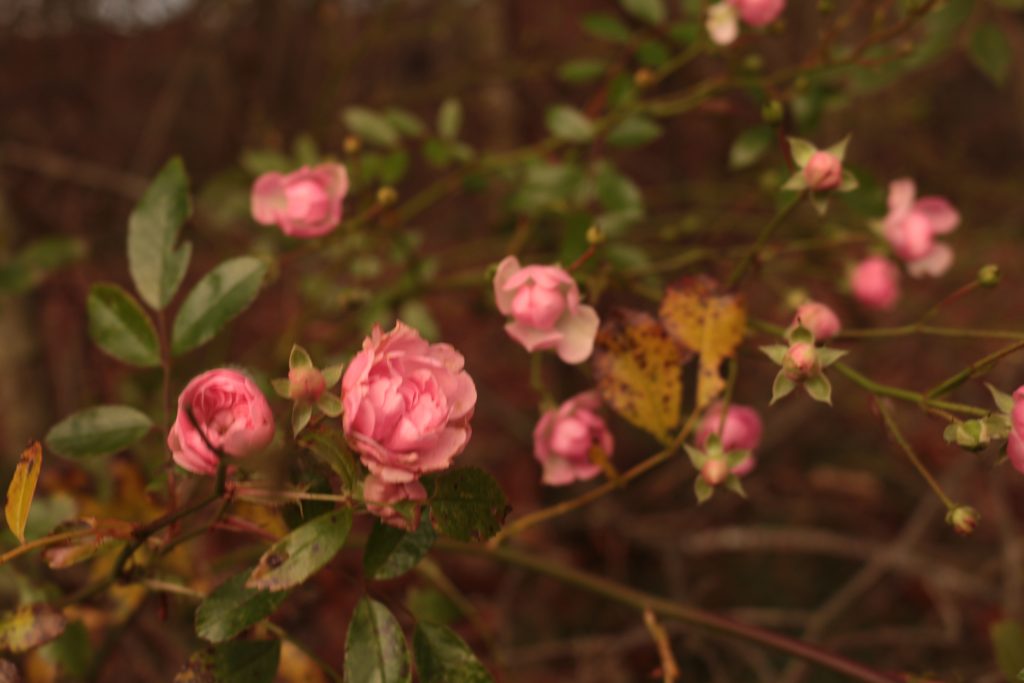Lade Braes Walk is a two mile walking trail along the ancient site of the priory lade–an artificial waterway to bring water to the priory mill. There have been eleven mills near Lade Braes and along Kinness Burn. The remains of several can still be seen today.
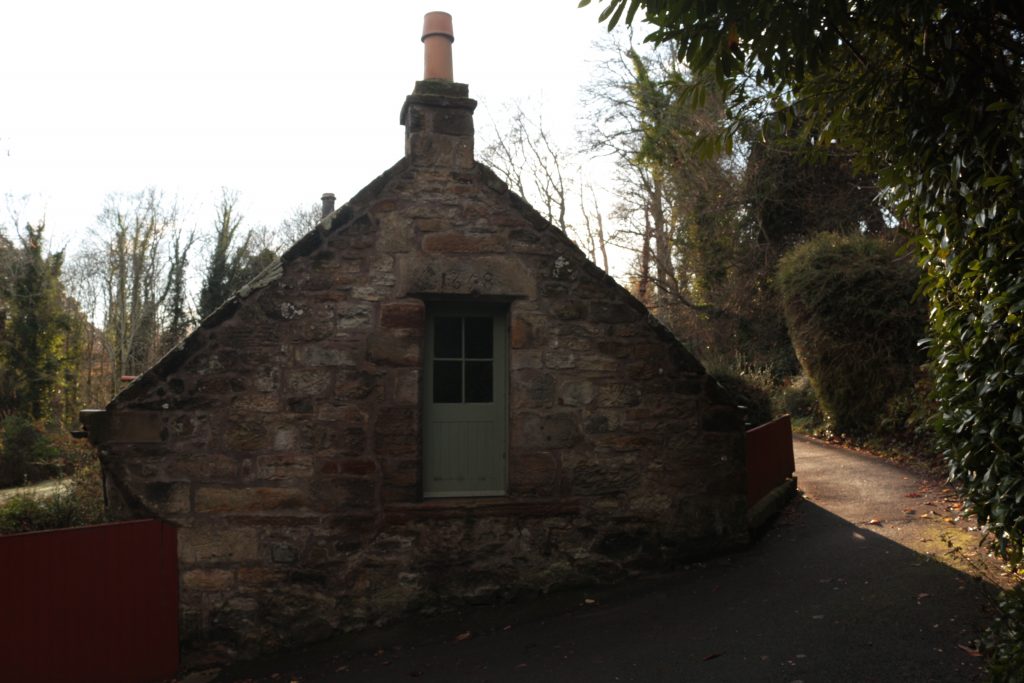
Plash Mill Cottage sits on the site of Plash Mill, later New Mill. This mill was used for waulking: a process of cleaning and thickening cloth. The mill was fed by a dam, the remains of which can be seen just a little further upstream.
A short, pleasant walk will bring you eventually to Hallow Hill. 150 Pictish Christian graves were excavated here, out of a presumed 500. A few were left exposed for visitors to view. The graves date from between the 5th and 9th centuries, and some contained Roman artifacts from the 2nd century.
The old name for Hallow Hill was eglisnamin, which may translate Holy Church. The foundations of a small building were found nearby, which could have been a graveyard chapel.
Just beyond Hallow Hill is Law Mill. The current building dates to 1757 and milling continued on location until 1913. The name is most likely taken from the Anglo-Saxon word for a burial hill.
Above Law Mill is the mill pond, now a duck pond.
The path now forks, the left following Cairnsmill Burn to Spinkie Den. Cairns Mill was swallowed by the current Cairnsmill Reservoir, but the Den is a beautiful stretch of pine woods running alongside of the burn.
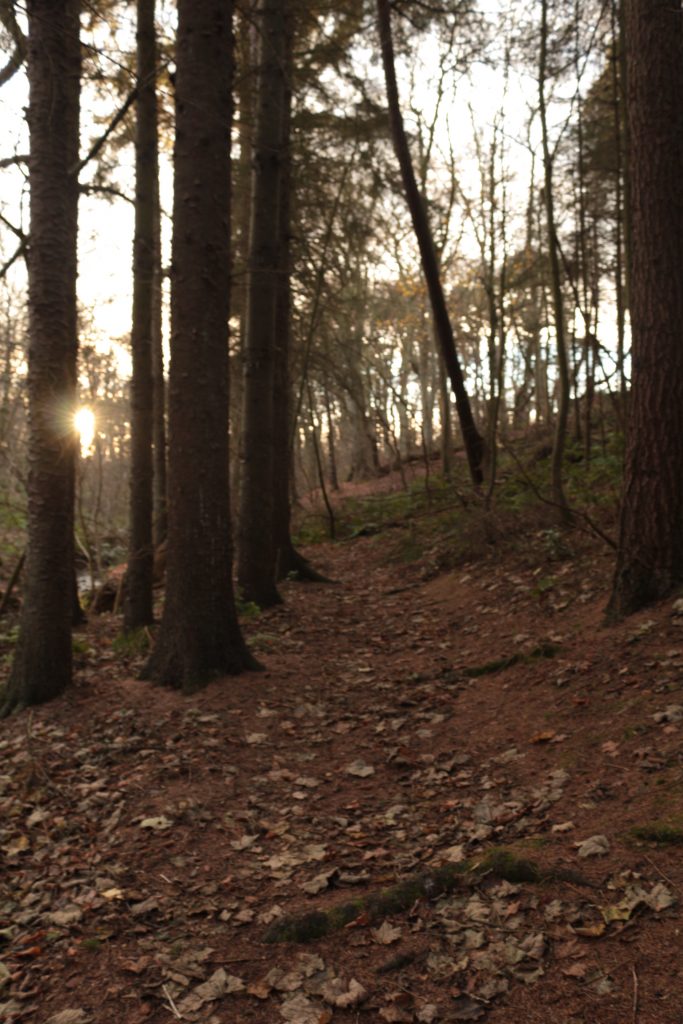
The fork to the right continues to follow Kinness Burn, with a short side-path that leads to the Bogward Doocot. It was built in the 16th century by the monks of St. Andrews Priory. It has 800 nesting boxes which held pigeons–a major food source for the priory.
